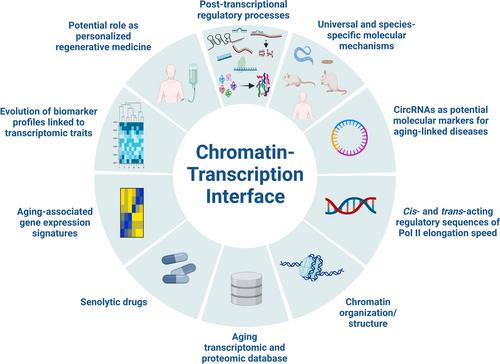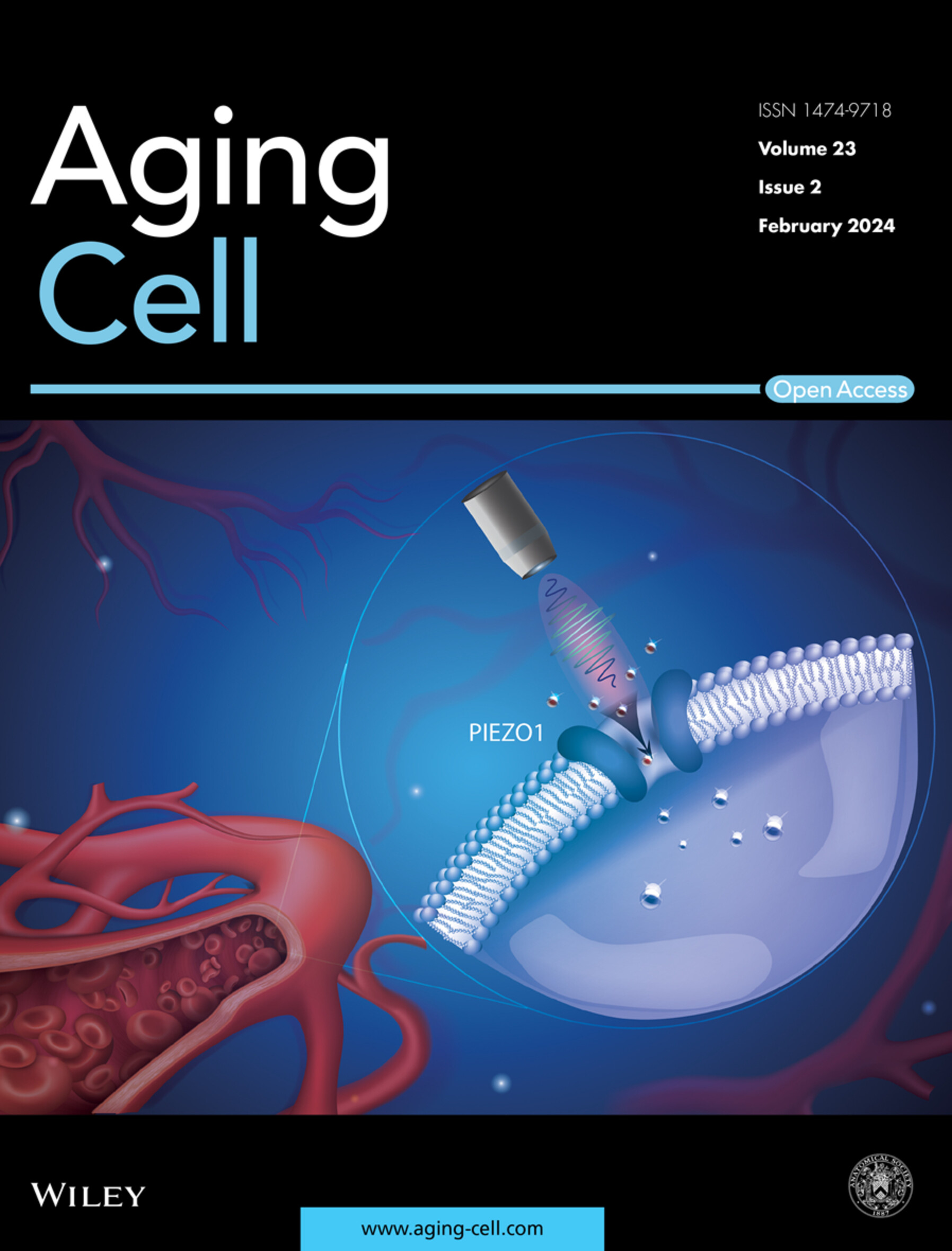染色质-转录界面:永葆青春的秘密?
IF 7.1
1区 医学
Q1 CELL BIOLOGY
引用次数: 0
摘要
deb本文章由计算机程序翻译,如有差异,请以英文原文为准。

Chromatin-transcription interface: The secret of eternal youth?
In their recent study in Nature, Debès et al. report an increase in RNA polymerase II (Pol II)-mediated transcriptional elongation speed associated with chromatin remodeling during aging in four metazoan animals, two human cell lines, and human blood. Their findings might help us understand why we age through evolutionarily conserved essential processes, and open a window to the molecular and physiological mechanisms influencing healthspan, lifespan and/or longevity.
求助全文
通过发布文献求助,成功后即可免费获取论文全文。
去求助
来源期刊

Aging Cell
Biochemistry, Genetics and Molecular Biology-Cell Biology
自引率
2.60%
发文量
212
期刊介绍:
Aging Cell is an Open Access journal that focuses on the core aspects of the biology of aging, encompassing the entire spectrum of geroscience. The journal's content is dedicated to publishing research that uncovers the mechanisms behind the aging process and explores the connections between aging and various age-related diseases. This journal aims to provide a comprehensive understanding of the biological underpinnings of aging and its implications for human health.
The journal is widely recognized and its content is abstracted and indexed by numerous databases and services, which facilitates its accessibility and impact in the scientific community. These include:
Academic Search (EBSCO Publishing)
Academic Search Alumni Edition (EBSCO Publishing)
Academic Search Premier (EBSCO Publishing)
Biological Science Database (ProQuest)
CAS: Chemical Abstracts Service (ACS)
Embase (Elsevier)
InfoTrac (GALE Cengage)
Ingenta Select
ISI Alerting Services
Journal Citation Reports/Science Edition (Clarivate Analytics)
MEDLINE/PubMed (NLM)
Natural Science Collection (ProQuest)
PubMed Dietary Supplement Subset (NLM)
Science Citation Index Expanded (Clarivate Analytics)
SciTech Premium Collection (ProQuest)
Web of Science (Clarivate Analytics)
Being indexed in these databases ensures that the research published in Aging Cell is discoverable by researchers, clinicians, and other professionals interested in the field of aging and its associated health issues. This broad coverage helps to disseminate the journal's findings and contributes to the advancement of knowledge in geroscience.
 求助内容:
求助内容: 应助结果提醒方式:
应助结果提醒方式:


